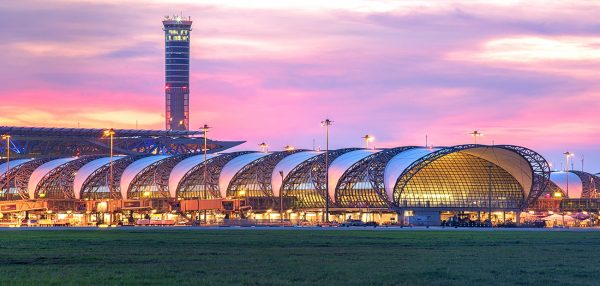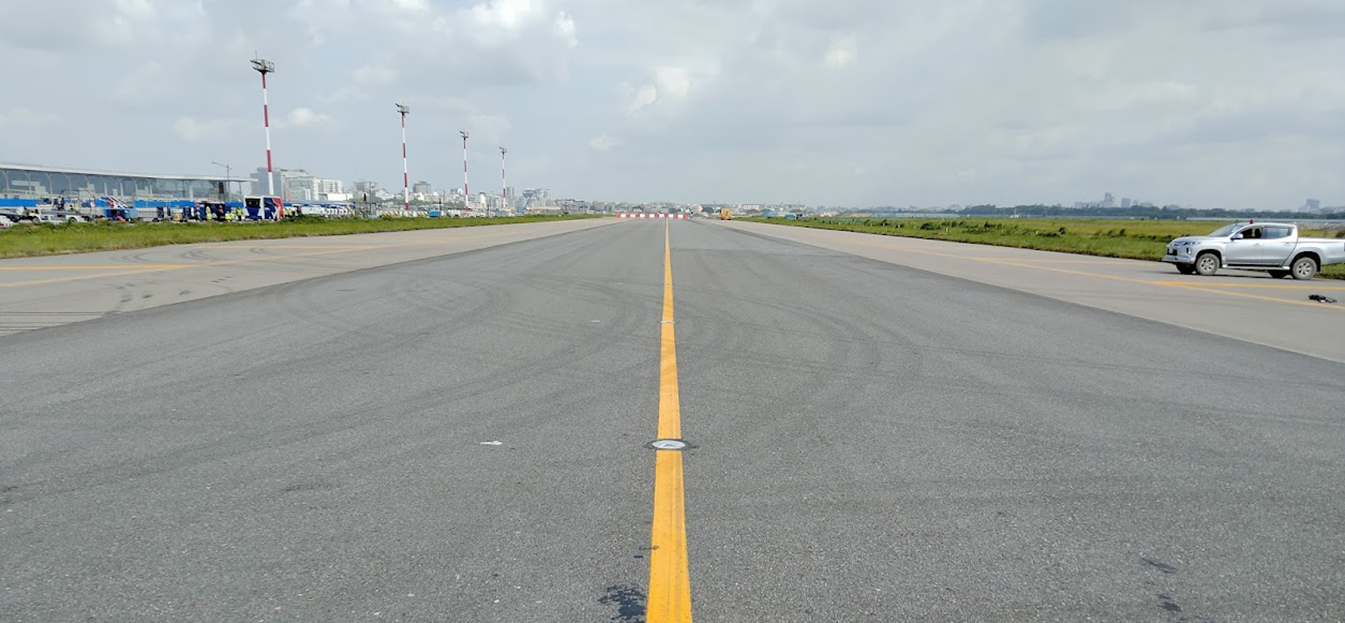Mongolia’s New Gateway
New airport makes air travel more efficient in Mongolia.

Award
Challenge
Help Mongolia meet air travel demand by building a new gateway international airport
The Chinggis Khaan International Airport (Old Airport) in Ulaanbaatar was the main international gateway of Mongolia and the sole hub for domestic air transport. However, the runway is short with a steep gradient that can only be approached from one direction due to surrounding mountains. The Old Airport also had experienced frequent flight cancellations because of low visibility from smoke and occasional adverse wind direction, especially in winter. The usability factor of the airport (percent of time the runway is not closed due to excessive crosswind) can be as low as 75% in the worst months, compared with the International Civil Aviation Organization (ICAO) standard of 95%.
With due recognition of the shortcomings of the Old Airport and the inability to upgrade the existing site, the Mongolian government signed a contract for construction of the New Ulaanbaatar International Airport. The new airport site is near the town of Zuunmod, approximately 52 km south of Ulaanbaatar city. The contract is financed 93% by a JICA soft loan and 7% by the Mongolian government.
The New Airport was to replace the existing one and be designed to secure safety, reliability and convenience for passengers and airport users and operators to accommodate the rapidly increasing demand for international and domestic air transportation.
In June 2019, a new airport operating company (NUBIA LLC) consisting of 4 Japanese companies (including Narita Airport) and 1 Mongolian company (Civil Aviation Authority of Mongolia, CAAM) was officially established. In July 2020, new airport operation was started by the NUBIA LLC.
Services
OC Global conducted a couple of precedent studies in 2003 (Civil Aviation Master Plan Study in Mongolia, EBRD) and 2007 (Special Assistance in Project Formation for the New Ulaanbaatar International Airport Construction Project, JBIC) .
OC Global was subsequently engaged in provision of the conceptual and preliminary designs, detailed design, assistance in prequalification and bidding. OC Global provided construction supervision services from 2013 until the end of defect liability period in 2021.
- Major Component of the Project
Runway: 3,600 m x 45 m, rigid pavement (rated for Boeing 747 class aircraft)
Taxiway: Parallel taxiway (3,339 m x 23 m), 2 rapid and 3 exit taxiway
Passenger apron: 104,200 sq.m , rigid and asphalt pavement
Passenger terminal building: 33,300 sq.m, 3-story, reinforced concrete (RC) + steel structure
Control tower and operations: 1,086 sq.m, 4-story, RC + steel structure
Other buildings: Fire station, heating plant, water and sewage plants, substations, sheds
Utility works: Telecommunication system, heating system and distribution, utility culvert, electrical power supply, sewage treatment system, water supply and distribution
Air navigation system: Aeronautical ground lighting systems, radio navigation systems, aeronautical telecommunication systems, aviation meteorological system
Others: Airport IT & security system, airport special equipment, fuel supply system
Results
The New Ulaanbaatar International Airport Construction Project was completed in June 2021.
Innovative and professional excellence, transparency, and management integrity provided during this project implementation were the key expertise in delivering this Project successfully.
The new airport was named Chinggis Khaan International Airport, and its operation as the country’s main international gateway was inaugurated in July 2021.
Now, the new airport is a new symbol of bilateral cooperation between Japan and Mongolia and is expected to contribute to Mongolia’s economic development in numbers of areas such as tourism and distribution by improving the convenience and connectivity within the region including Mongolia.
Link
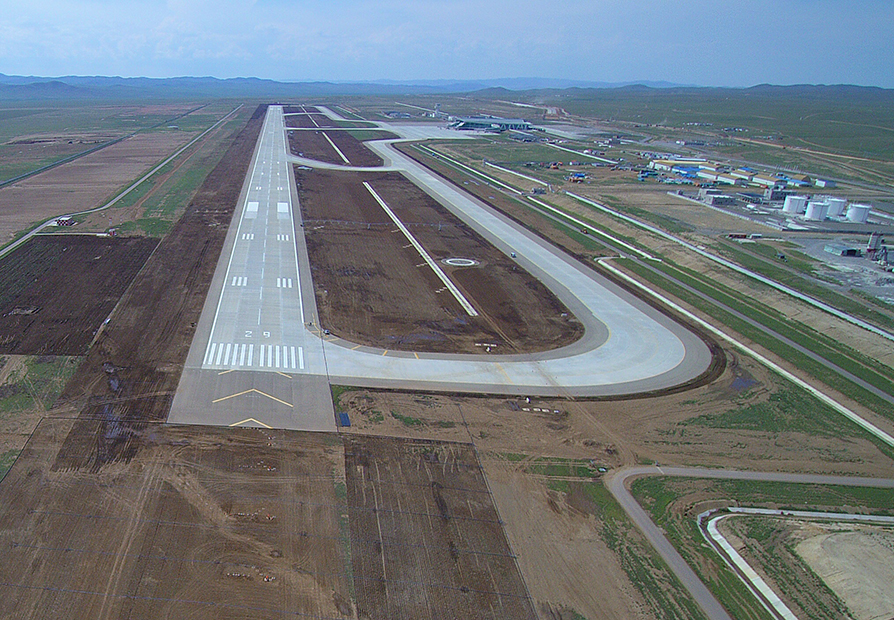
Runway east end
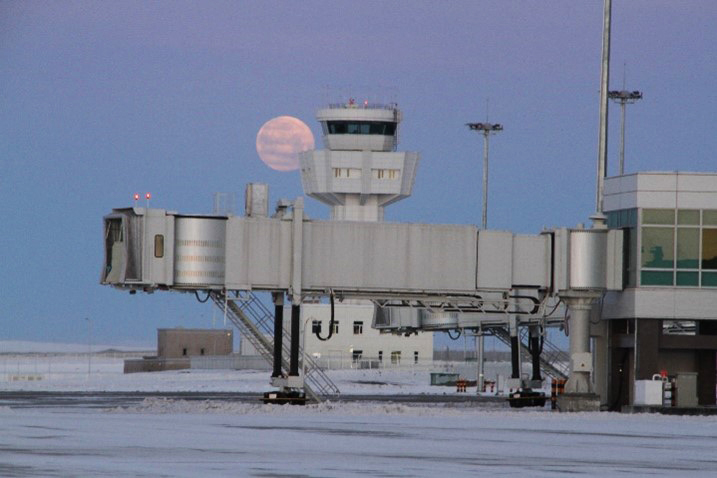
Passenger Boarding Bridge

Terminal area

Passenger Terminal
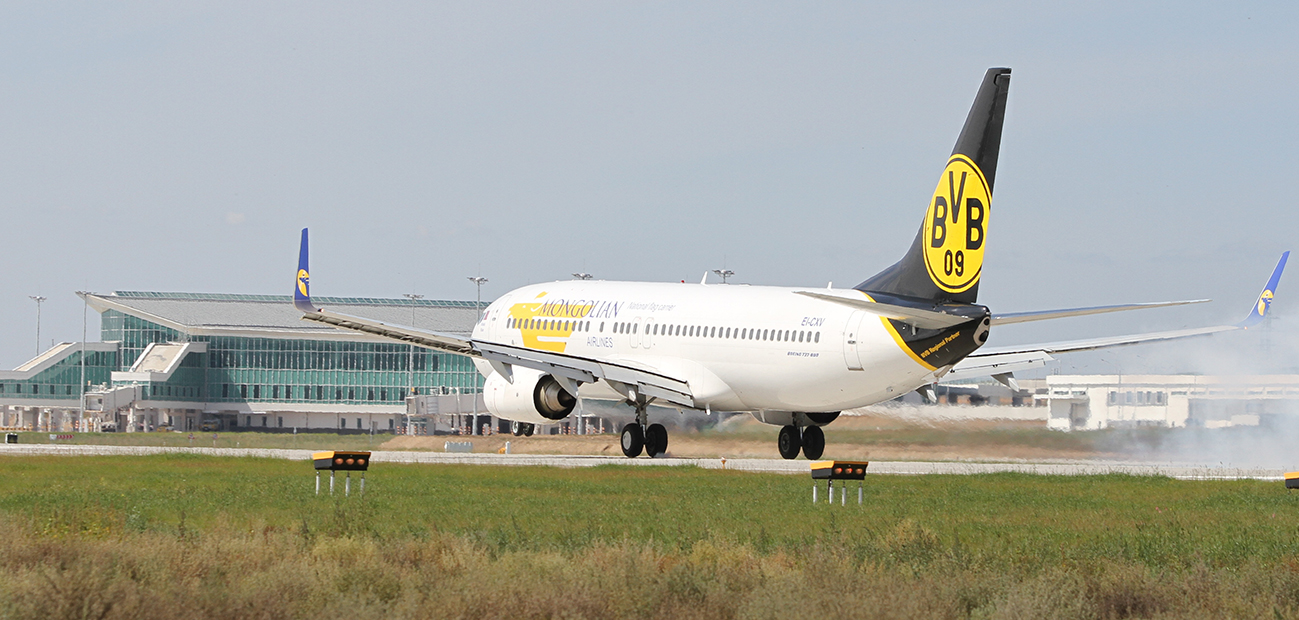
First Landing 2018/08/18
Location
Mongolia
Official Title
New Ulaanbaatar International Airport Construction Project
Project Type
Airport Construction
Client
Civil Aviation Authority of Mongolia / JICA
Project Period
2009 – 2020
Sustainable Development Goals (SDGs)
The technical assistant for constructing a new airport is a crucial part of Mongolia in creating sustainable and resilient infrastructure. The airport would support economic and social development in the region by becoming a gateway to the nation.


